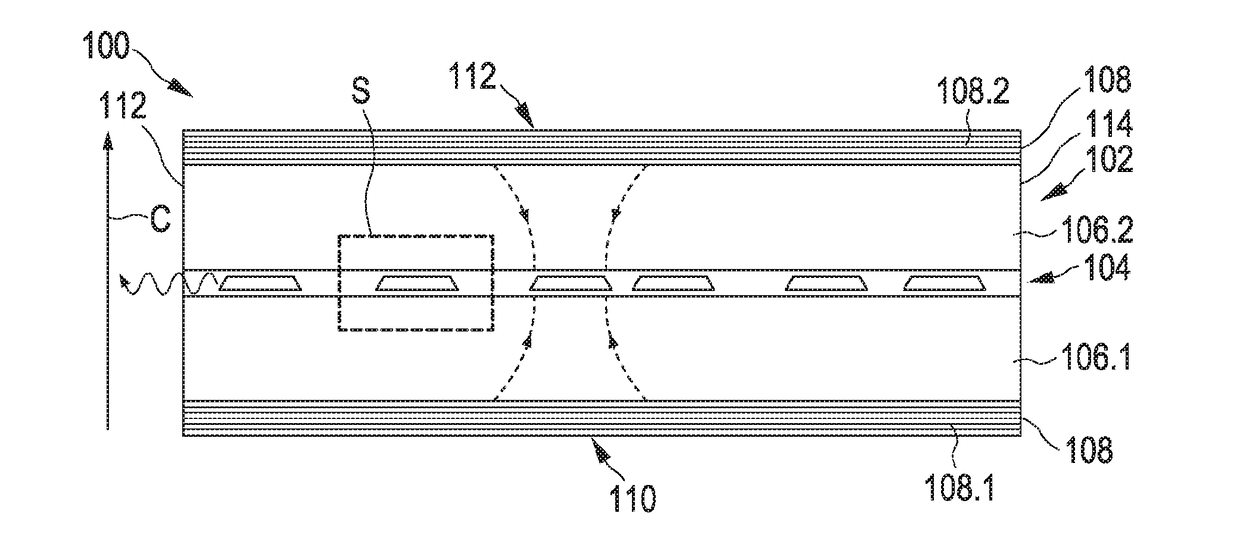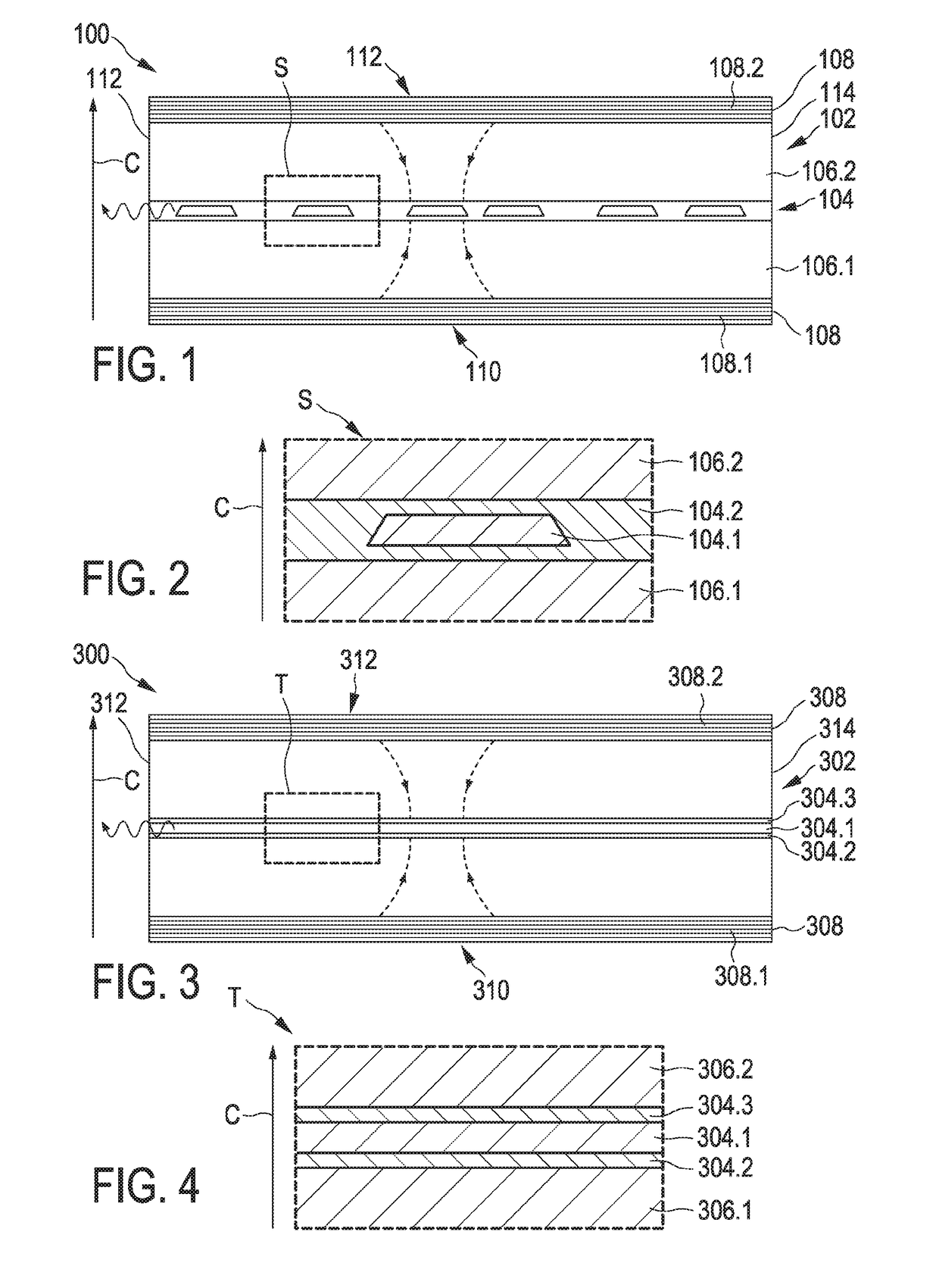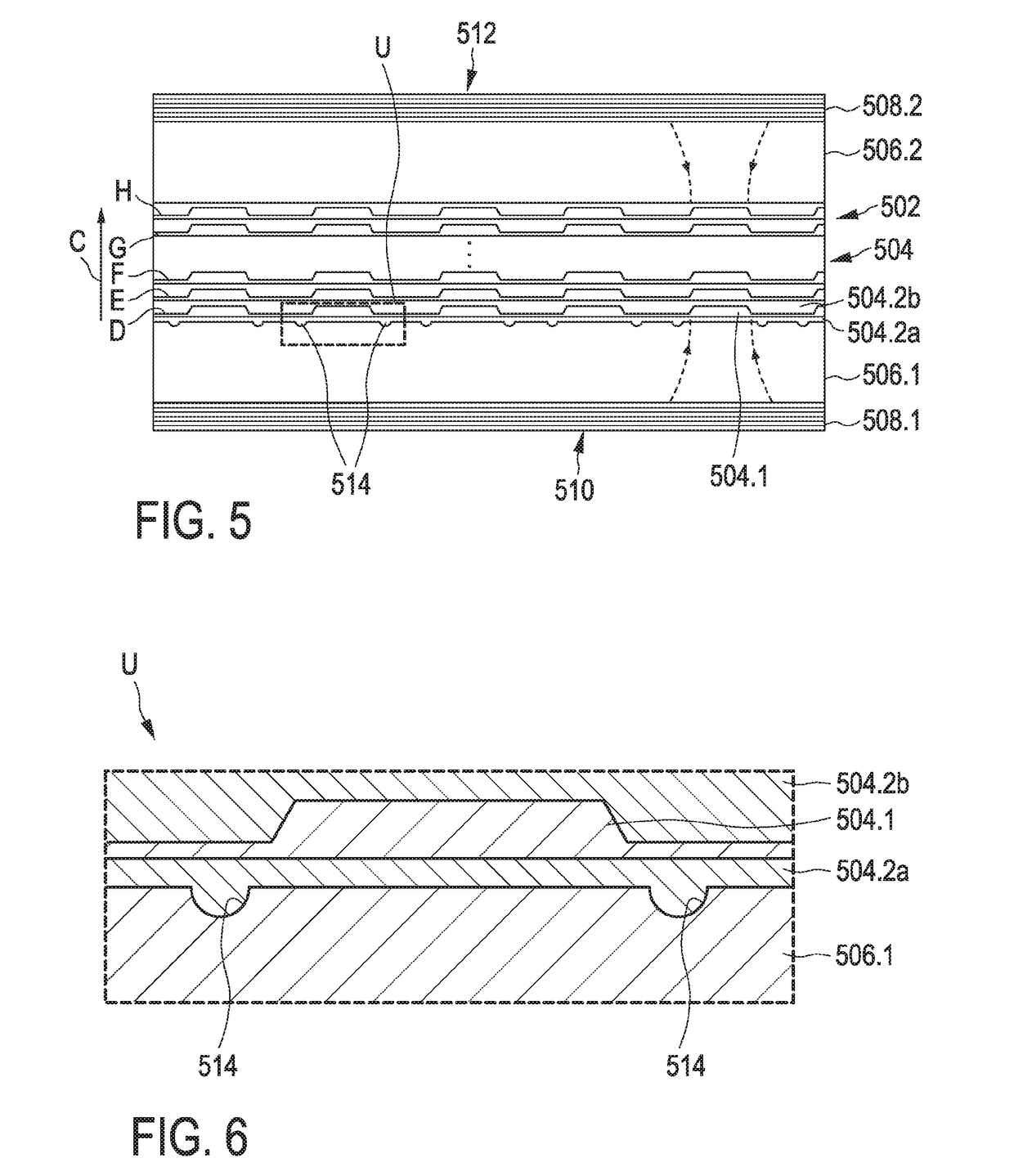Semiconductor device having an internal-field-guarded active region
a technology of active region and shielding effect, which is applied in the direction of shielding device, basic electric element, electrical apparatus, etc., can solve the problems of red shift of light emission, achieve low internal absorption of photons, reduce the effect of polarization shielding effect, and achieve special strong advantageous effect
- Summary
- Abstract
- Description
- Claims
- Application Information
AI Technical Summary
Benefits of technology
Problems solved by technology
Method used
Image
Examples
Embodiment Construction
[0060]FIG. 1 is a schematic cross-sectional view of an embodiment of a quantum-dot semiconductor device 100 forming a light emitter. Reference is made in parallel to FIG. 2, which shows an enlarged view of a section S outlined by a dashed line in FIG. 1.
[0061]The quantum dot semiconductor device 100 comprises a layer sequence 102 formed by a number of polar semiconductor material layers, which will be described in the following. The semiconductor material layers are group-III nitride semiconductors and each have a hexagonal crystal structure. The layer sequence 102 consists of semiconductor material layers that each has a crystal axis pointing in a direction c indicated by a vertical arrow in FIG. 1. The c direction also forms the stacking direction of the layer sequence 102. Typically, the layer sequence 102 is fabricated by epitaxial growth, the growth direction of the layer sequence 102 thus being the c direction.
[0062]Specifically, the layer sequence 102 consists of the followin...
PUM
 Login to View More
Login to View More Abstract
Description
Claims
Application Information
 Login to View More
Login to View More - R&D
- Intellectual Property
- Life Sciences
- Materials
- Tech Scout
- Unparalleled Data Quality
- Higher Quality Content
- 60% Fewer Hallucinations
Browse by: Latest US Patents, China's latest patents, Technical Efficacy Thesaurus, Application Domain, Technology Topic, Popular Technical Reports.
© 2025 PatSnap. All rights reserved.Legal|Privacy policy|Modern Slavery Act Transparency Statement|Sitemap|About US| Contact US: help@patsnap.com



